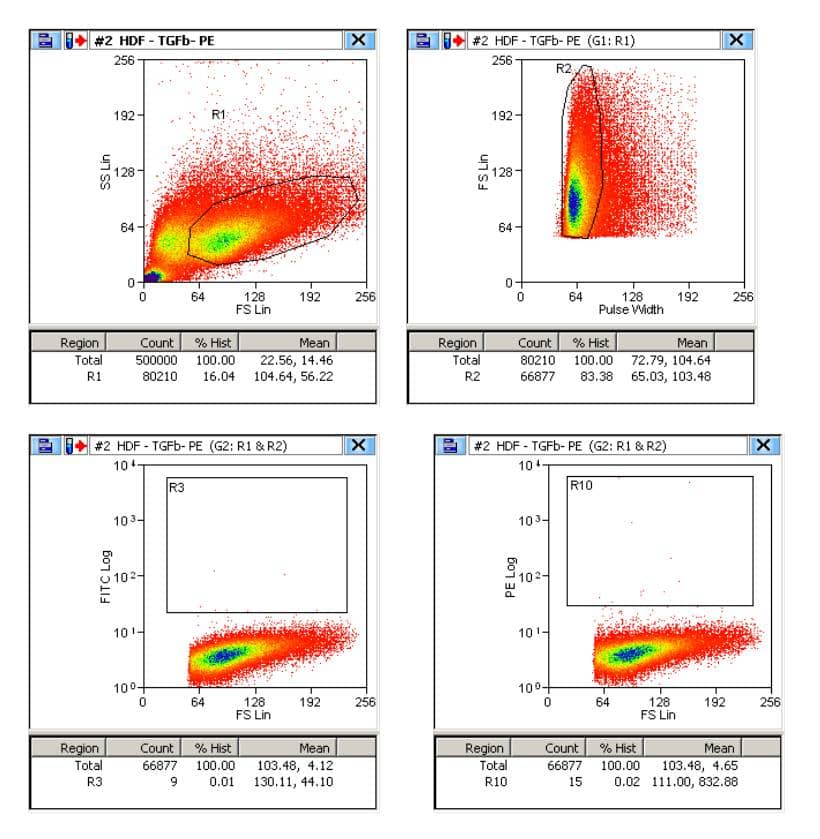| Reactivity | HuSpecies Glossary |
| Applications | Flow |
| Clonality | Polyclonal |
| Host | Goat |
| Conjugate | Phycoerythrin |
| Conjugate | Catalog # | Availability | Size | Price |
|---|---|---|---|---|
| Alexa Fluor 700 | FAB2411N-100 | |||
| Alexa Fluor 700 | FAB2411N-025 | |||
| Allophycocyanin | FAB2411A-100 | |||
| Allophycocyanin | FAB2411A-025 | |||
| Biotin | BAF241 | |||
| Fluorescein | FAB2411F-100 | |||
| Fluorescein | FAB2411F-025 | |||
| Phycoerythrin | FAB2411P-025 | |||
| Unconjugated | AF-241-NA | |||
| Immunogen | Mouse myeloma cell line NS0-derived recombinant human TGF‑ beta RII Ile24-Asp159 Accession # P37173.2 |
| Specificity | Detects human TGF-beta RII in direct ELISAs and Western blots. In direct ELISAs, less than 5% cross-reactivity with recombinant mouse (rm) TGF‑ beta RII and less than 1% cross-reactivity with recombinant human TGF-beta RIII and rmTGF-beta RI is observed. |
| Source | N/A |
| Isotype | IgG |
| Clonality | Polyclonal |
| Host | Goat |
| Gene | TGFBR2 |
| Purity Statement | Antigen Affinity-purified |
| Innovator's Reward | Test in a species/application not listed above to receive a full credit towards a future purchase. |
| Dilutions |
|
|
| Reviewed Applications |
|
|
| Publications |
|
| Storage | Protect from light. Do not freeze.
|
| Buffer | Supplied in a saline solution containing BSA and Sodium Azide. |
| Preservative | Sodium Azide |
TGF beta RII is a membrane bound serine/threonine kinase. Upon ligand binding, TGF beta RII interacts with TGF beta RI to form the heteromeric signaling complex thattransduces TGF beta signals. A splice variant of the type II receptor, TGF beta RIIb, containing a 25 amino acid residue insertion near the Nterminus of the mature protein has also been described.
| Images | Ratings | Applications | Species | Date | Details | ||||||||
|---|---|---|---|---|---|---|---|---|---|---|---|---|---|

Enlarge |
reviewed by:
Verified Customer |
Flow | Human | 01/27/2015 |
Summary
|
Secondary Antibodies |
Isotype Controls |
The concentration calculator allows you to quickly calculate the volume, mass or concentration of your vial. Simply enter your mass, volume, or concentration values for your reagent and the calculator will determine the rest.